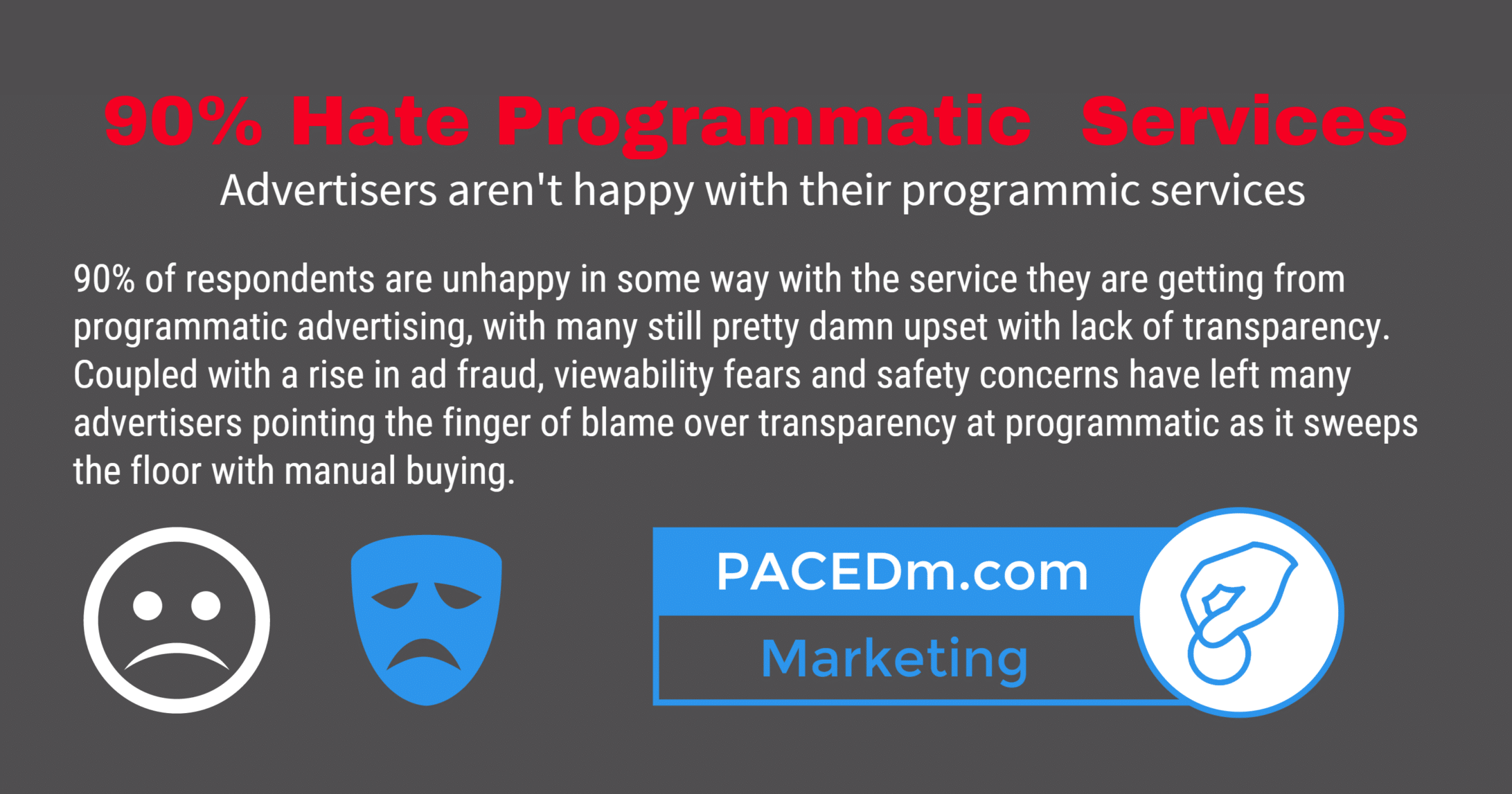Programmatic ad buying offers a lot of advantages to advertisers. It is very convenient, and when done properly it can be quite effective. It is also very popular, especially with larger brands that find the convenience of having a significant portion of their digital ads automatically handled for them without the need of having human interaction at every step. According to a new report from the World Federation of Advertisers (WFA), however, programmatic ad buying might not be delivering.
The report is from a fairly small survey of 59 of the member companies.
These companies, however, handle more than $70 billion in ad buying, which makes their insights quite valuable.
In the survey it was found that nearly 90% of respondents are unhappy in some way with the service they are getting from programmatic advertising. This isn’t to say that they think programmatic is not worth it, but just that there is significant demand for change and innovation in the industry.
One of the biggest areas of complaint is with regards to transparency. There has been some improvement in this area since this topic was evaluated in 2014, when 36% of respondents responding that they were satisfied with transparency. With the latest report, 51% were happy with the level of transparency.
Many respondents also responded that using a programmatic agency trade desk weren’t quite as satisfying as an independent trade desk (ITD). The ITDs have actually become 12% more popular since 2014 as more companies move in this direction.
Matt Green of Global Media & Digital Marketing Lead at the WFA said of this report, “Programmatic has expanded rapidly and it’s no surprise that the market and mechanisms that big brands use to spend through this channel are evolving. The rise of in-house, hybrid models and independent trading desks demonstrates that the original trading model left much to be desired. The second generation of trading models is now being built and while agency trading desks still take the greatest share of digital spend there are now real alternatives being developed that give brands more control over data and technology alongside the wider push to ensure greater transparency.”
In a May 2015 survey, fraud and quality/brand safety concerns were the leading obstacle to buying ads programmatically, with viewability not far behind. With Incapsula reporting that 56% of web traffic is bot traffic (29% being bad bots such as impersonators, hacking tools, scrapers and spammers), these are legitimate concerns.
Digiday reported that Business Insider allows advertisers to purchase inventory based on viewability, but for a serious premium. But if advertisers have to pay more for a “viewable” impression, doesn’t it imply that the regular priced impressions are not viewable? A better solution for advertisers would be to take steps to increase viewabilty and eliminate fraud so that the concerns for all advertisers decrease, rather than simply charging more for “fraud-free” or “viewable” impressions.
Programmatic advertising isn’t going to be going away anytime soon, but it will hopefully continue to evolve and advance to meet the needs of large ad buyers. This should also benefit smaller marketers and ad buyers who will be using programmatic in the future.




